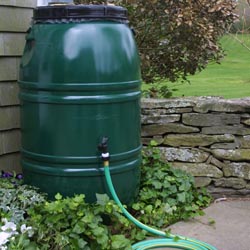How to water plants in the Summer

To prevent your plants hanging their heads in summer, they need plenty of water. But how much, how often, water from above or below? Here you find some smart and helpful facts for watering your plants.
Rule no. 1: Keep evenly moist
Most plants depend on even moisture. However, slight drying out before watering promotes root growth of the plants.
Rule no. 2: Water more seldom but then thoroughly
In the flower bed, one to two watering sessions per week are usually sufficient: better to water more seldom but with plenty of water rather than a little water often.
Rule no. 3: Water late in the evening or early in the morning
When you water cooled soil in the evening or night then less water evaporates than as on hot soil during the day. And the plants can sufficiently supply themselves with water before the next day’s heat.
Rule no. 4: Keep leaves dry
Wet leaves become diseased leaves. Kept wet overnight, leaf-mould diseases may result. Leaves that are made wet in the sun develop slight burn marks (burning glass effect of the water droplets).
Requirement-suited watering means that the water must sufficiently reach the roots. Too-low water quantities often only cover the upper soil centimetres – or don’t even reach them at all, e.g. when there is a mulch covering of the soil and too little irrigation. Requirement-suited watering also means that crop plants are particularly dependent upon evenly moist soil in the time until their crops are ripe for harvesting (examples: the forming of roots and corms [carrots, potatoes], leaves [basil, field salad], heads [cauliflower, lettuce], husks [beans] or fruit [tomatoes, fruit]).
Rule no. 5: Give the right water quantity
Rule no. 6: Give larger water quantities in parts
Water needs a moment to seep into the soil. Before precious water in the bed flows away unused, it’s better to water repeatedly in parts.
Rule no. 7: Water with a target but distribute
Always watering at only one root point leads to one-sided root growth and thereby to poorer nutrient absorption in the soil. Therefore, always water around the plant and distribute in the entire irrigation area.
Rule no. 8: Irrigate in a way that saves water
Water as much as necessary and as little as possible. This is simplified with an automatic irrigation system with moisture sensor – in the bed, on the balcony and on the lawn.
Rule no. 9: Avoid waterlogging
Waterlogging suppresses the breathing air of the roots out of the soil – the root cells drown without oxygen.
Rule no. 10: Use quality, clay-rich soil
Plant soil rich in clay minerals has better expanding properties and can therefore hold soil in the water better and in a more even way. In wet summers and in winter, ensure water drainage to prevent waterlogging.





